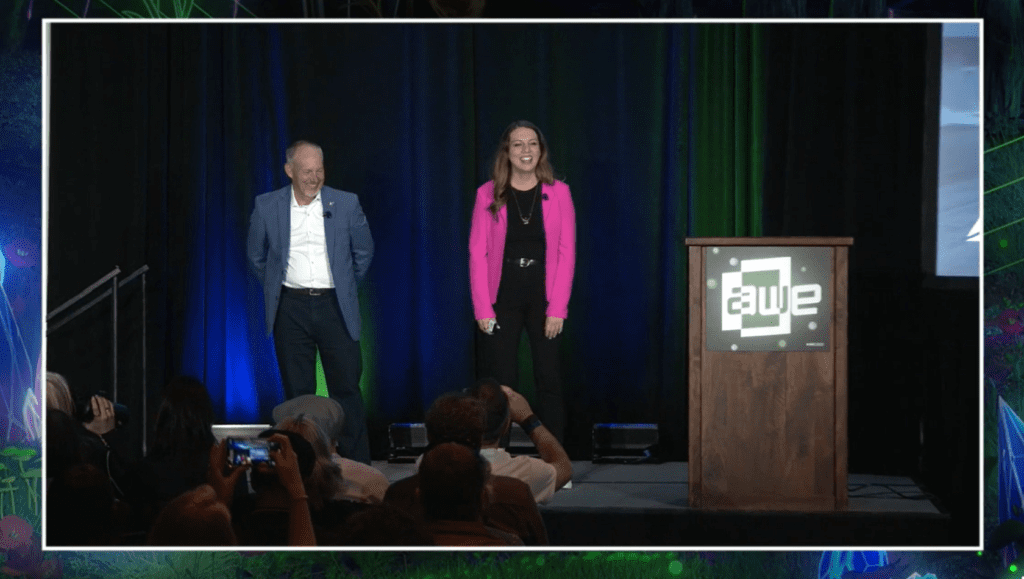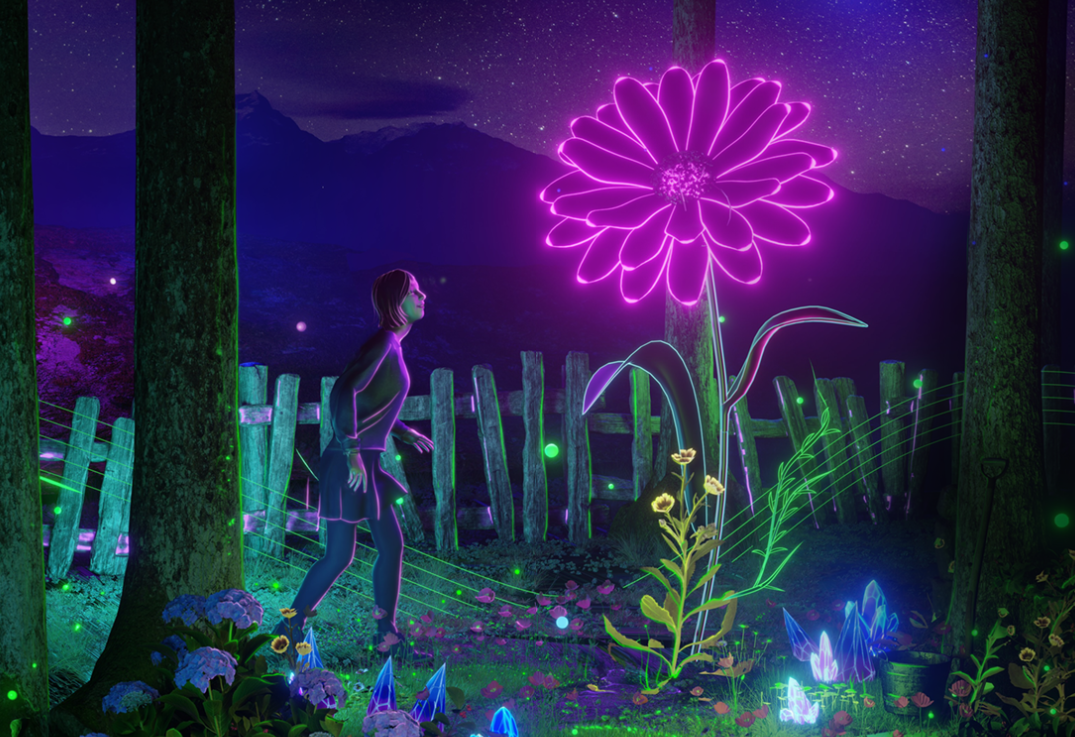
13 Jun Augmented World Expo 2023 Recap
I recently got the opportunity to speak alongside Kevin Marcum from Delta Air Lines at Augmented World Expo (AWE) in Santa Clara, California. This event is one of the largest industry events of the year, bringing together thousands of extended reality professionals and highlighting advancements in augmented and virtual reality. It was a fantastic week filled with insightful sessions, technology demos, and peer-to-peer conversations.
One of the highlights (for me) was presenting a session about virtual reality design, focusing on a recent plane deice virtual reality experience we produced with Delta Air Lines. Kevin and I were able to share our production process and the importance of VR-first design. We spoke about leveraging virtual reality to achieve what can’t be done in the physical world. This included simulating weather with a click of a button and using unlimited materials, which are typically costly. We also discussed ways to bring virtual reality-produced content into other formats, such as tablet and web-based companion experiences. You can watch the entire presentation here.
In addition to our session, we got to spend quite a bit of time in the expo hall and networking with other industry professionals. I was happy to see Atlanta-based ZenVR with a booth! ZenVR is a virtual reality-based meditation learning system and virtual classroom. Their system combines the structure and teachings of real-world classes in the practice of meditation with the immersion of VR.

After catching up with familiar faces, I was able to check out some of the latest devices, including the newly announced Leap Motion 2 and the recently rebranded XREAL. It was great to see both companies showcasing the next evolutions of their products and brands. I especially liked how XREAL demonstrated their Air glasses with a method I hadn’t previously seen. Demo devices were affixed to height-adjustable poles so that people didn’t have to put the glasses directly on their faces – they could just step up, adjust and look through the product. This not only helped with cleanliness but throughput, and I wouldn’t be surprised if we see more of that in the future.
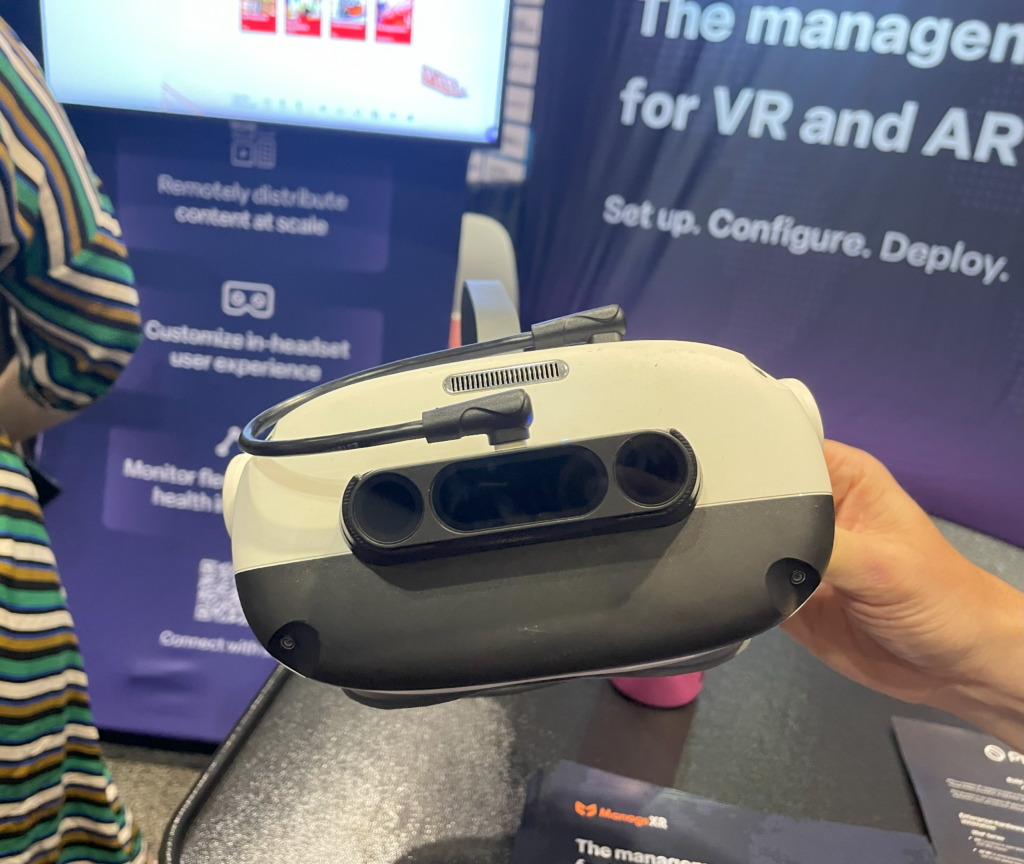
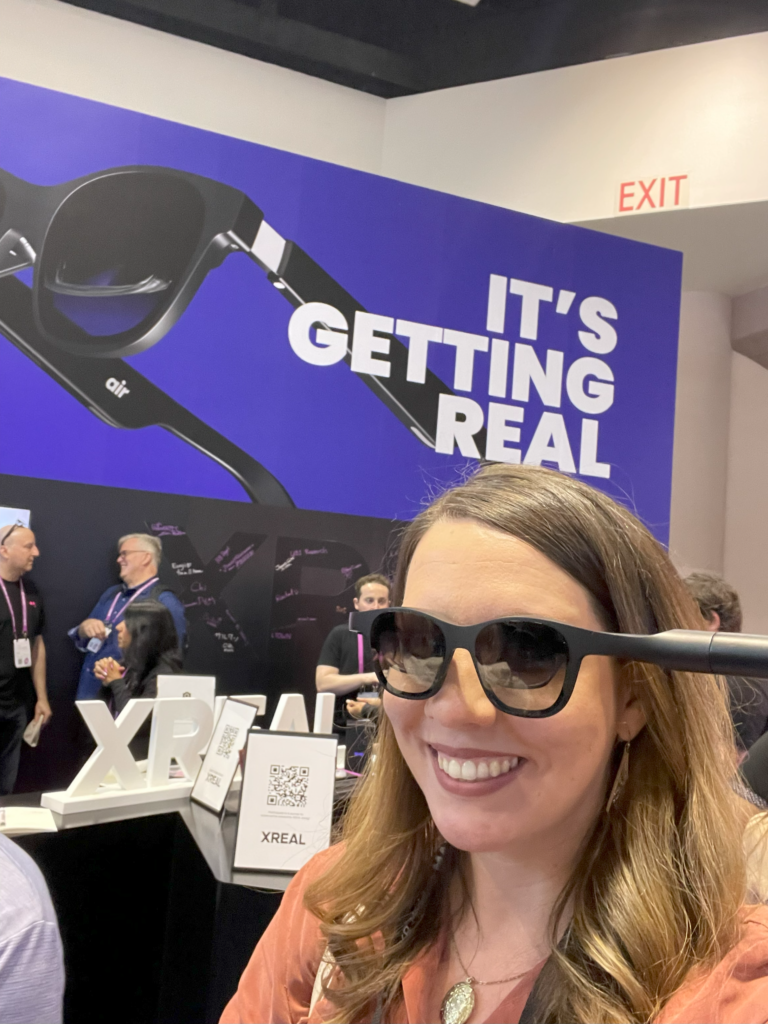
After that, I headed over to the “Playground” area, where there were many unique experiences on display. Two that I found truly fascinating were an exoskeleton suit called Exit Suit, and a way to display 3D content without a headset called Looking Glass. Exit Suit was honestly something you couldn’t look away from. I was trying to figure out what I was watching and what would happen next, but it appears it’s a harness that allows freedom of rotation and the ability to fall in VR while remaining secure. Looking Glass had one of the most beautiful displays I’ve seen. It’s hard to tell from a 2D photo, but the quality was amazing, and everything inside the “box” looked 3D. I could see this as a way to do FaceTime in the future when 3D facial tracking is available on video call platforms.
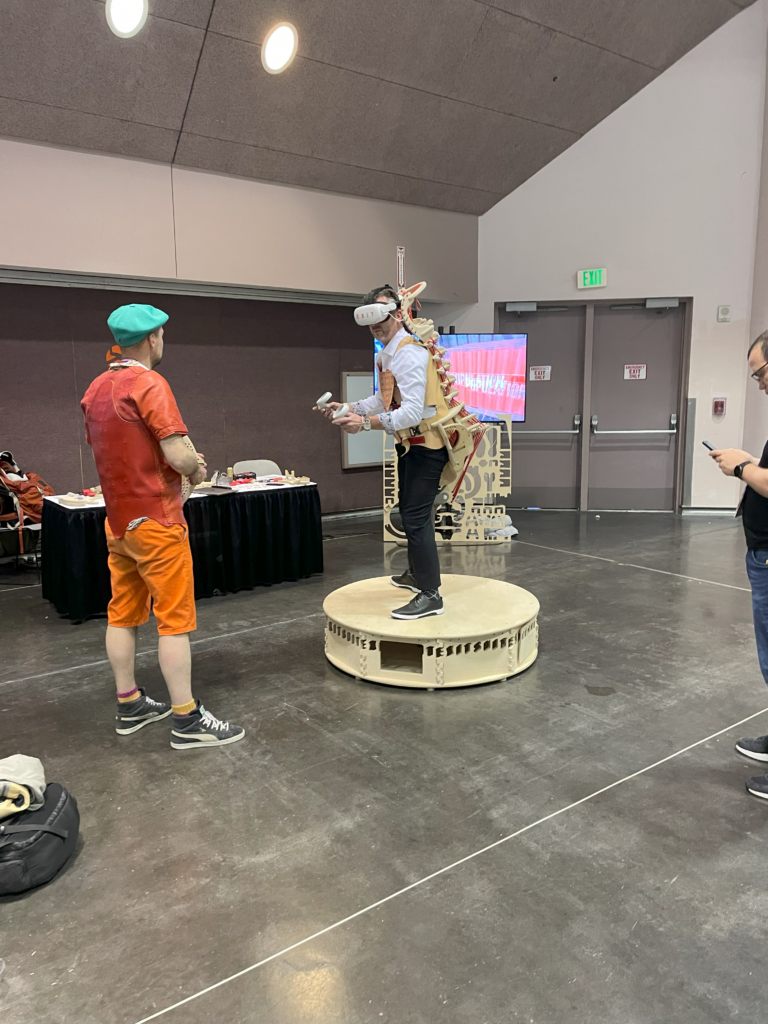
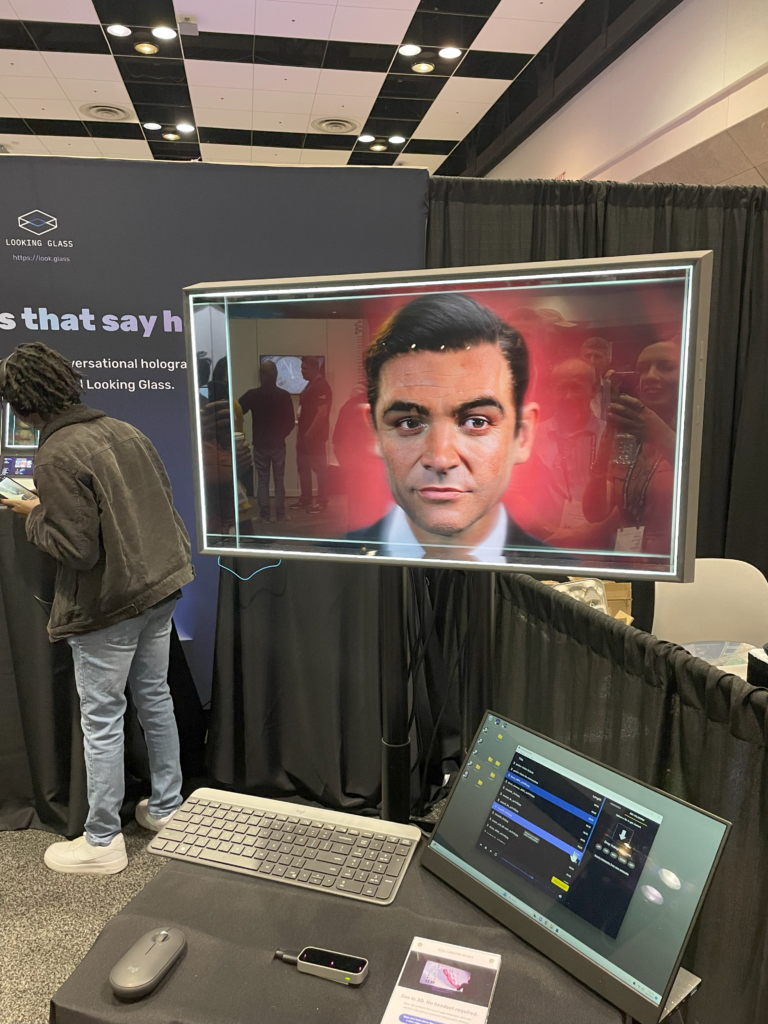
In addition to attending my own session, I was able to catch a couple of others. One that was extremely topical focused on scaling and best practices in doing so. It featured Caitlin Rawlins from Veterans Affairs, Robert Murphy from Axon, and Jarrad Nagel from Walmart and was moderated by David Burch from ArborXR. One of my biggest takeaways from this panel is that everyone was willing to share their experience to help the industry grow. So many companies treat tech like a walled garden – they must be first, and they don’t want to spill their secret sauce. However, all the individuals on this panel know that if we don’t continue to support each other, the industry will not advance in the way we hope.
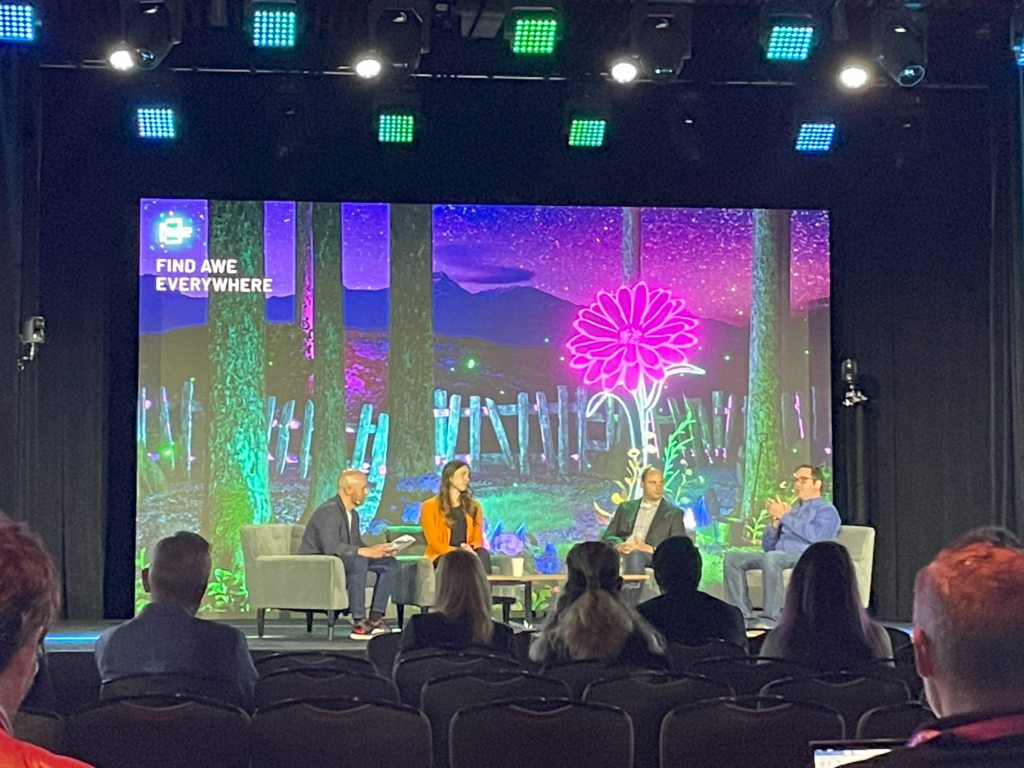
There was too much packed into 3 days to cover it all here, which is a great sign of progress and advancement in the extended reality industry. And I agree with the panelists above, sharing and learning from each other is going to be the top way to move forward as a community. I hope to return next year and see what’s changed – it may seem like advancements are slow, but when you think about it, it’s incredibly fast. We only received standalone virtual reality 6DOF headsets 4 years ago. I can’t wait to see what happens in the next 4!

